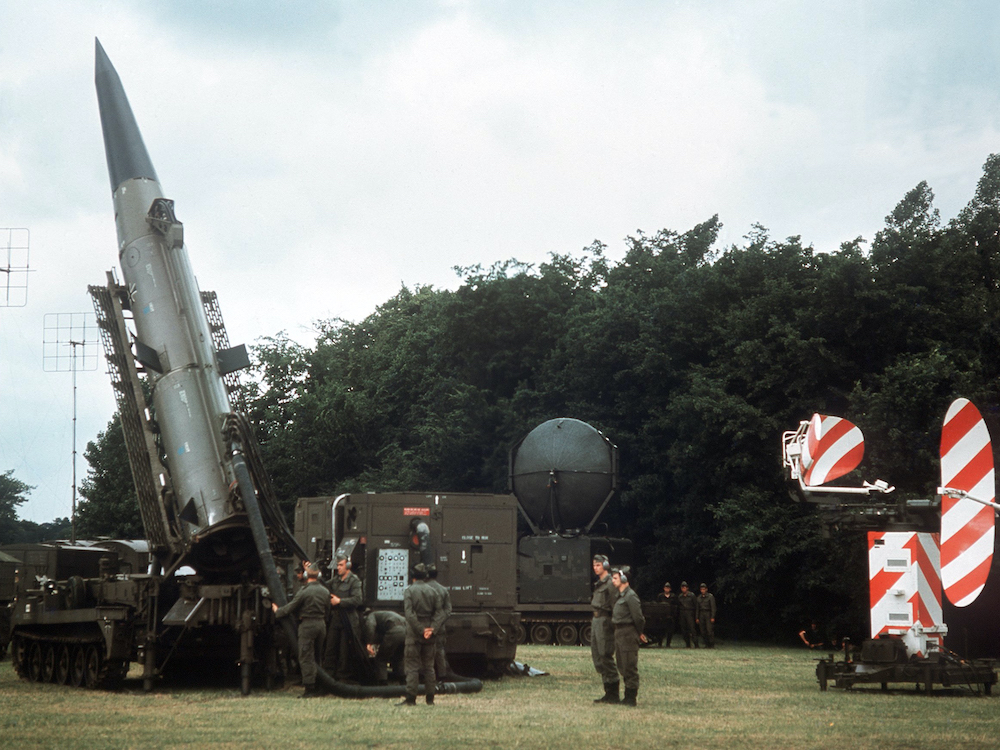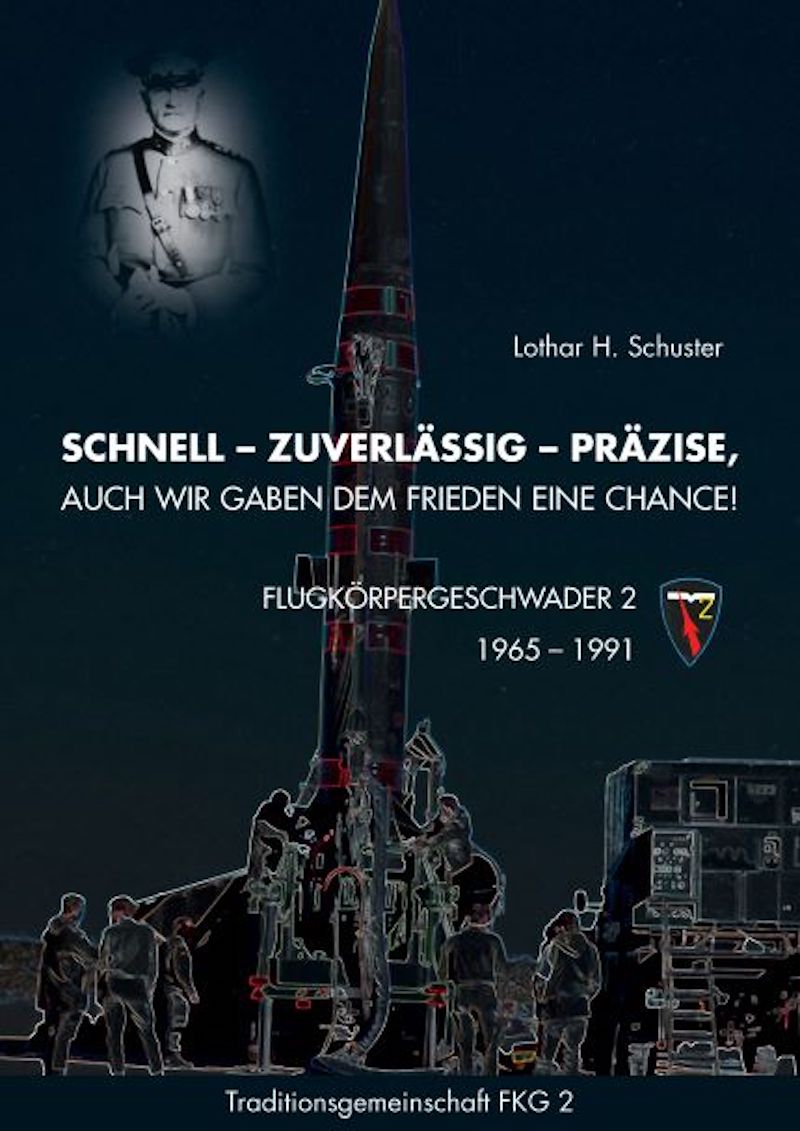Hol Dir den wöchentlichen SPARTANAT-Newsletter.
Dein Bonus: das gratis E-Book von SPARTANAT.

BOOKS & MORE: Pershing statt Petting
Nach der Aufrüstung Westdeutschlands entstand die Frage nach dem Zugang der jungen Bundeswehr zu Atomwaffen. Nach politischen Kontroversen wurde die Bundeswehr schließlich in die Zielplanung und Nutzung von Atomwaffen im Rahmen der NATO-Nuklearteilungsrichtlinie einbezogen.
Nach der westdeutschen Wiederbewaffnung stellte sich auch die Frage des Zugangs der jungen Bundeswehr zu Atomwaffen. Nach politischen Kontroversen wurde die Bundeswehr dann im Rahmen der nuklearen Teilhabe der NATO in die Zielplanung und den Einsatz von Atomwaffen einbezogen.
Als ein Trägersystem für nukleare Gefechtsköpfe stationierte das amerikanische Heer ab 1963 das neu entwickelte und nach einem US-General aus dem 1. Weltkrieg benannte Flugkörpersystem „Pershing“ in Deutschland. Neben den 3 US-Heeresbataillonen stellte die deutsche Luftwaffe im Zeitraum 1963 bis 1965 zusätzlich zwei Flugkörpergeschwader auf, die ebenfalls mit dem Waffensystem Pershing ausgestattet wurden. Die nuklearen Gefechtsköpfe der beiden deutschen Flugkörpergeschwader blieben dabei aber stets unter amerikanischer Kontrolle.

Das Flugkörpergeschwader 1 (FKG 1) mit dem zugeordneten 74th United States Army Field Artillery Detachment (74th USAFAD) und das Flugkörpergeschwader 2 (FKG 2) mit dem zugeordneten 85th United States Army Field Artillery Detachment (85th USAFAD) waren zunächst mit dem Waffensystem Pershing 1 (auf Kettenfahrzeugen) und ab 1971 mit dem Waffensystem Pershing 1A (auf Radfahrzeugen) ausgerüstet.
Ab 1983 wurden die US-Einheiten im Rahmen der NATO-Nachrüstung mit dem Waffensystem Pershing 2 ausgestattet; eine Umrüstung der beiden deutschen Flugkörpergeschwader erfolgte nicht. In der Endphase des Kalten Krieges erfolgte nach der Ratifizierung des INF-Vertrages (Intermediate Range Nuclear Forces Treaty) 1988 parallel bis 1991 auch die Abrüstung der deutschen Pershing-Systeme und die Auflösung der beiden Flugkörpergeschwader. In Erinnerung der Öffentlichkeit bleibt noch immer die Parole der Friedensbewegung das: „Petting statt Pershing“.
Obwohl die Einsatzverfahren der Flugkörpergeschwader strengster Geheimhaltung unterlagen, bestand das Personal zum überwiegenden Anteil aus Wehrpflichtigen, die kontinuierlich wechselten.
Der Autor Lothar H. Schuster hat selbst Wehrdienst im Flugkörpergeschwader 2 in Geilenkirchen geleistet und danach mit Unterstützung der Traditionsgemeinschaften beider deutscher Flugkörpergeschwader kontinuierlich zeitgenössische Dokumente gesammelt, ausgewertet und archiviert.
Erstmals konnten daher nun aus deutscher Sicht zeitgenössische Berichte, zwischenzeitlich deklassifizierte Geheimunterlagen (auch der Gegenseite) und bisher noch nie veröffentlichte Bilder und Dokumente aus den Privatarchiven von amerikanischen und deutschen Pershing-Veteranen am Beispiel des Flugkörpergeschwaders 2 zusammengeführt und kommentiert werden, um insbesondere das Einsatzverfahren der (nuklearen) Sofortbereitschaft verständlich werden zu lassen.
Dadurch zeigen sich 30 Jahre nach Auflösung der beiden Flugkörpergeschwader erstmals historische Zusammenhänge, die nicht nur militärisch Interessierten bisher zumeist verschlossen waren.
„Schnell – Zuverlässig – Präzise. Auch wir gaben dem Frieden eine Chance“ von Lothar H. Schuster, 592 Seiten, Verlag Mainz, Euro 70 – bestellbar hier direkt über den Verlag.
SPARTANAT ist das Online-Magazin für Military News, Tactical Life, Gear & Reviews.
Schickt uns eure News: [email protected]
Werbung
Hol Dir den wöchentlichen SPARTANAT-Newsletter.
Dein Bonus: das gratis E-Book von SPARTANAT.


